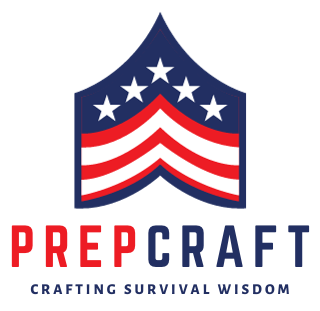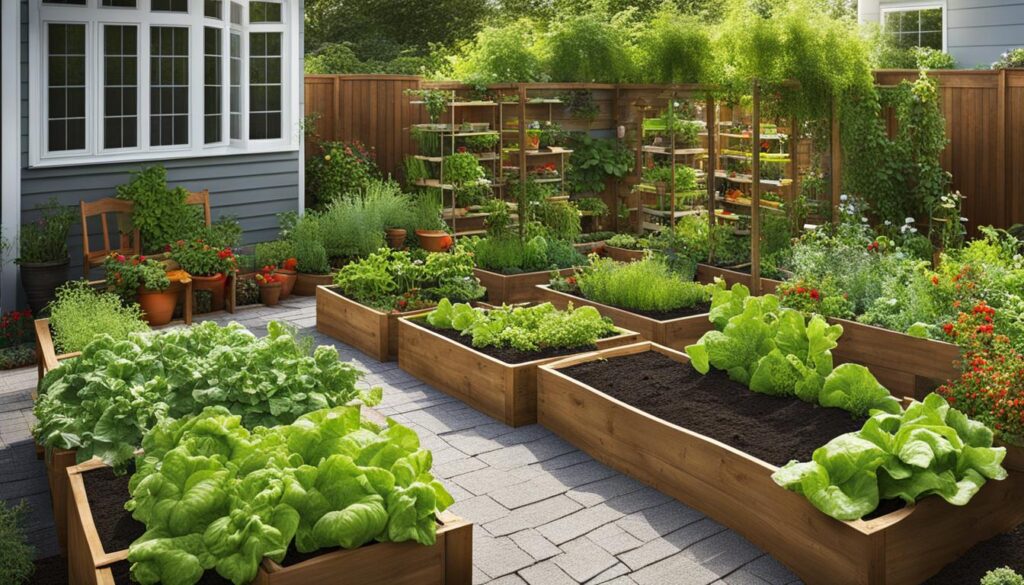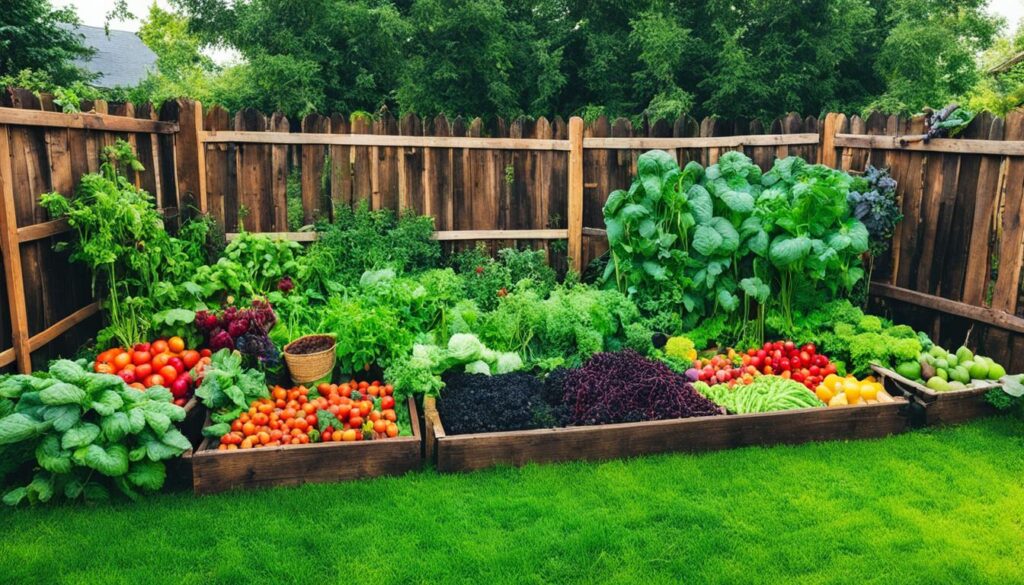
Welcome to my blog on homesteading sustainability and long-term self-reliance strategies! In today’s fast-paced world, many of us yearn for a simpler, more sustainable way of life. Homesteading offers a path towards self-sufficiency, where we can live in harmony with nature and reduce our dependence on external resources.
While achieving complete self-sufficiency may be challenging, there are practical steps we can take to become more self-reliant. By producing our own food, conserving resources, and embracing a mindset of simple living, we can work towards long-term self-sufficiency.
In this blog, I will share valuable information and insights on sustainable living and self-sufficiency. We’ll explore various strategies to help you on your journey towards becoming more self-reliant, including tips for growing your own food, building sustainable structures, and developing essential skills.
Key Takeaways:
- Homesteading offers the opportunity for a simple and self-sufficient lifestyle.
- Self-sufficiency involves producing as much as possible for your needs and reducing dependence on others.
- Becoming more self-sufficient has numerous benefits, such as financial fortification and improved physical fitness.
- Planning and setting realistic goals are essential when starting on the path to self-sufficiency.
- Growing your own food, building sustainable structures, and conserving resources are key steps towards self-sufficiency.
The Benefits of Self-Sufficiency
Becoming more self-sufficient offers a multitude of benefits for individuals and communities. Here are some key advantages of embracing sustainable living and self-reliance:
- Financial Fortification: By reducing reliance on external sources of income, self-sufficiency can provide stability and financial security.
- Improved Physical Fitness: Consuming homegrown produce promotes a healthier lifestyle, ensuring a steady supply of nutritious food.
- Greater Control Over Life Choices: Self-sufficiency empowers individuals to make independent decisions, fostering autonomy and personal growth.
- Resilience in Times of Hardship: When faced with challenges or unexpected situations, self-sufficient individuals are better equipped to adapt and overcome obstacles.
“Self-sufficiency is the greatest of all wealth.” – Epicurus
Adopting sustainable practices such as composting and recycling goes hand in hand with self-sufficiency. By reducing ecological footprints, individuals contribute to a greener, more sustainable future. Furthermore, self-sufficiency promotes the development of strong community relationships and encourages the sharing of resources through bartering and trading.
Living frugally and autonomously strengthens self-reliance and resilience. It encourages the mindful use of resources, discourages wastefulness, and fosters a sense of gratitude for what one has.
Growing Your Own Food
One of the fundamental aspects of self-sufficiency is the ability to grow your own food. This practice offers a myriad of benefits, including:
- Cost savings by reducing grocery expenses.
- A closer connection to nature and the food you consume.
- Environmental responsibility by reducing reliance on industrial farming and its associated negative impacts.
- The assurance of consuming fresh, pesticide-free produce.
By cultivating a garden and learning about sustainable gardening practices, individuals can take a significant step towards self-sufficiency.
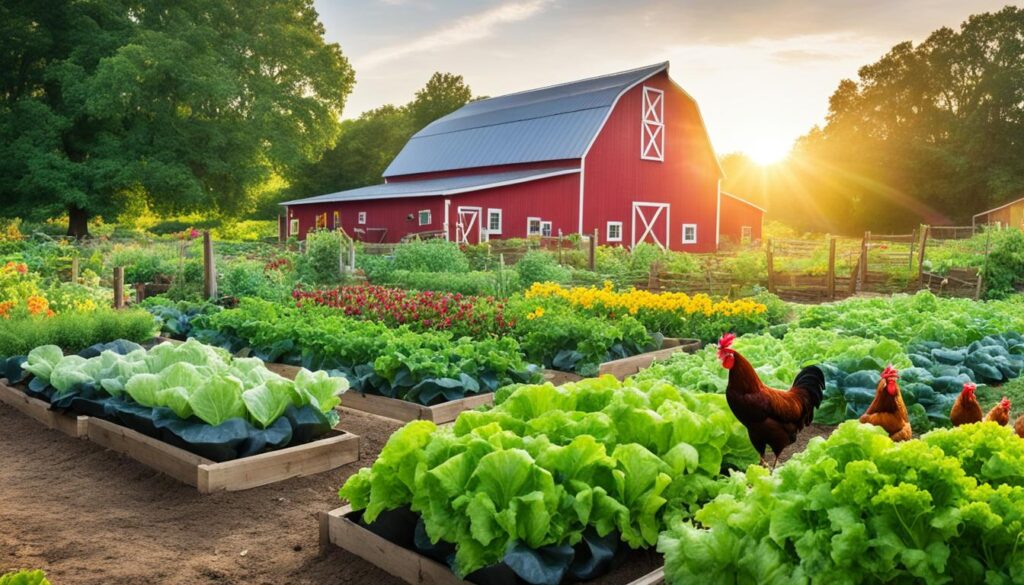
| Benefit | Description |
|---|---|
| Financial Independence | Reduced reliance on external sources of income |
| Improved Physical Fitness | Access to fresh, homegrown produce |
| Greater Control Over Life Choices | Independence and autonomy in decision-making |
| Resilience in Times of Hardship | Ability to adapt and overcome challenges |
Getting Started on the Path to Self-Sufficiency
Before embarking on the journey towards self-sufficiency, it is crucial to set clear goals and determine your necessities. Planning plays a vital role in breaking down these goals into manageable steps within a realistic timeframe. Consistency and persistence are key in moving towards self-sufficiency, regardless of how small each step may seem.
To get started, acquiring self-reliance skills and knowledge is essential. Learning about sustainable gardening and permaculture can significantly contribute to your journey towards self-sufficiency. These practices offer effective ways to grow your own food, reduce dependency on external resources, and embrace a more self-sufficient lifestyle.
“Gardening is a skill that provides both self-sufficiency and a connection to nature. By growing our own food, we take control of our nourishment, reduce our ecological footprint, and enjoy the freshest, most nutritious produce.” – Nathan Thompson, Sustainable Living Enthusiast
No matter where you currently stand on the path to self-sufficiency, remember that every step counts. Start small, such as growing herbs in a kitchen garden or learning to preserve food through canning. As you gain confidence and knowledge, you can gradually expand your self-sufficiency efforts and take on more significant projects.
Remember, self-sufficiency is a journey, and it’s important to celebrate milestones along the way. Each accomplishment brings you closer to a more sustainable and self-reliant lifestyle.

Creating a Self-Sufficiency Plan
Developing a comprehensive plan is crucial to guide your journey towards self-sufficiency. Consider the following steps:
- Identify your self-sufficiency goals: Determine what aspects of self-sufficiency are most important to you. Are you focused on food production, energy independence, or something else?
- Assess your resources: Take stock of the resources available to you, such as land, space, tools, and finances. Understanding your starting point will help you develop a realistic plan.
- Research and learn: Invest time in learning the skills and techniques necessary to achieve your self-sufficiency goals. Attend workshops, read books, and seek guidance from experienced individuals in your community.
- Create a timeline: Break down your goals into specific tasks and allocate timeframes for each. Having a timeline will keep you focused and motivated.
- Start small and scale up: Begin with manageable projects that align with your goals. As you gain experience and confidence, take on more ambitious projects and expand your self-sufficiency efforts.
- Stay adaptable and open-minded: Self-sufficiency is an ongoing learning process. Be open to adjusting your plans based on new information and experiences.
By following these steps, you can develop a clear roadmap for your self-sufficiency journey and set yourself up for long-term success.
Ways to Achieve Self-Sufficiency
Growing your own food is a fundamental way to become more self-sufficient. It allows for cost savings, environmental responsibility, and a closer connection to nature.
Building sustainable structures and systems, such as energy-efficient dwellings and greywater systems, can contribute to long-term self-sufficiency. Conserving resources and reducing waste, whether through rainwater harvesting or using reusable items, is another important aspect of self-sufficiency.
Developing Skills for Self-Sufficiency
Developing skills is crucial for achieving self-sufficiency. Learning new skills and techniques is a key step towards becoming more self-reliant and self-sufficient. While it may be challenging at first, with practice and dedication, anyone can acquire the necessary skills to thrive in a self-sufficient lifestyle.
One of the skills that can greatly contribute to self-sufficiency is carpentry. Being able to build and repair basic structures not only saves money but also provides the ability to create custom solutions for specific needs. Whether it’s constructing a chicken coop or repairing a fence, carpentry skills empower individuals to take care of their homestead and reduce reliance on outside help.
Gardening is another essential skill for self-sufficiency. By learning how to grow your own food, you can reduce dependence on grocery stores and have a constant supply of fresh produce. Gardening skills include understanding soil health, planting and harvesting techniques, pest control, and sustainable gardening practices. With these skills, you can create a thriving garden and sustainably feed yourself and your family.
One effective way to develop self-sufficiency skills is by finding mentors or teachers who have expertise in the desired areas. These mentors can provide valuable guidance and advice, helping you avoid common pitfalls and accelerate your learning. Whether it’s joining a local gardening club, attending workshops, or seeking guidance from experienced homesteaders, learning from mentors can greatly enhance your journey towards self-sufficiency.
Regular practice is necessary to master self-reliance skills and make them second nature.
Showcasing the process of learning and acquiring new skills for self-sufficiency can be inspirational for others considering a similar lifestyle. By documenting your progress, challenges, and achievements, you can inspire and educate others who are on a similar journey towards self-sustainability.
Self-Sufficiency Skills
| Skill | Description |
|---|---|
| Carpentry | Building and repairing structures for self-sufficient living |
| Gardening | Growing your own food and sustainable gardening practices |
| Animal Husbandry | Raising and caring for livestock for food and other resources |
| Preservation and Food Storage | Canning, drying, and storing food for long-term self-sufficiency |
| Basic Plumbing | Repairing and maintaining water systems for self-sufficient living |
Regular practice is necessary to master self-reliance skills and make them second nature. Consistency and persistence are key when it comes to learning and developing new skills. Embrace the process and do not be discouraged by initial setbacks. With time and dedication, you can acquire the skills needed to lead a self-sufficient lifestyle.
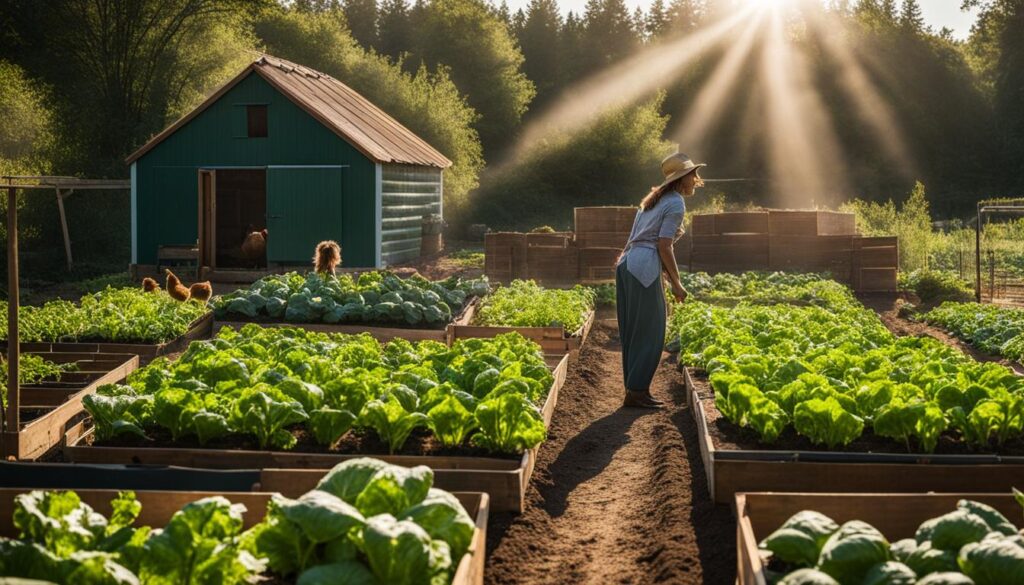
Maintaining a Sustainable Lifestyle
Creating habits that support sustainability is vital for maintaining a self-sufficient lifestyle. By making conscious decisions to use resources responsibly and reduce waste, such as recycling and using reusable items, we can have a significant impact on conserving resources and minimizing our ecological footprint.
One of the key aspects of maintaining a sustainable lifestyle is being aware of our energy consumption. By using energy-efficient appliances and utilizing renewable energy sources like solar panels, we can significantly reduce our carbon footprint and contribute to a greener future.
Staying connected to nature plays a crucial role in leading a sustainable lifestyle. Engaging in activities like gardening, hiking, and spending time outdoors not only helps us appreciate the beauty of the natural world but also strengthens our connection to it. It reminds us of the importance of conserving and protecting our environment.
Sustainability Habits
Developing sustainable habits is essential for long-term self-reliance and a greener future. Here are some sustainability habits that can be incorporated into our daily lives:
- Reduce, reuse, and recycle: By minimizing waste, reusing items whenever possible, and recycling materials, we can make a significant impact on conserving resources.
- Conserve water: Implement water-saving techniques like collecting rainwater for gardening and using water-efficient appliances to reduce water consumption.
- Choose eco-friendly products: Opt for environmentally friendly products and brands that prioritize sustainability.
- Support local and sustainable agriculture: Purchase locally grown produce and support farmers who adopt sustainable farming practices.
Conserving Resources
Conserving resources is a foundational practice for maintaining a sustainable lifestyle. Here are some ways to conserve resources:
- Use energy-efficient appliances and lights to reduce electricity consumption.
- Minimize water usage by fixing leaks, taking shorter showers, and using water-efficient fixtures.
- Practice mindful consumption: Buy only what you need and avoid unnecessary waste.
- Choose sustainable transportation options such as biking, carpooling, or utilizing public transportation when possible.
Staying Connected to Nature
Spending time in nature not only provides a sense of peace and rejuvenation but also reminds us of the importance of protecting the environment. Here are some ways to stay connected to nature:
- Engage in outdoor activities like hiking, camping, or birdwatching.
- Create a garden or maintain indoor plants to bring nature into your daily life.
- Volunteer for environmental organizations or participate in local conservation initiatives.
- Practice mindfulness in nature by observing the beauty around you and appreciating the ecosystems that support life.
“In the end, we will conserve only what we love; we will love only what we understand; and we will understand only what we are taught.” – Baba Dioum
Sustainability Habits: Impact Assessment
The table below highlights the positive impact of adopting sustainability habits on conserving resources, reducing waste, and staying connected to nature:
| Sustainability Habits | Impact |
|---|---|
| Reduce, reuse, and recycle | Reduces waste, conserves resources, and minimizes landfill contribution |
| Conserve water | Reduces water usage and preserves this valuable natural resource |
| Choose eco-friendly products | Supports sustainable production practices and reduces environmental harm |
| Support local and sustainable agriculture | Promotes local economy, reduces carbon footprint, and supports ethical farming practices |
By incorporating sustainability habits into our lives and making a conscious effort to conserve resources and stay connected to nature, we can play an important role in creating a more sustainable and self-sufficient future.
Planning Your Self-Sustaining Homestead
Careful planning is crucial when creating a self-sustaining homestead. To ensure long-term sustainability and self-reliance, it’s important to assess the land and climate conditions, design a sustainable layout, and incorporate water management techniques.
Assessing Land and Climate
When selecting land for your self-sustaining homestead, consider factors such as soil health, water sources, and the potential for crop rotation. Assess the soil quality, pH levels, and drainage to determine the suitability for growing a variety of crops. Also, evaluate the availability of water sources, including wells, rainwater catchment systems, or nearby rivers or lakes. Understanding the climate and microclimates of the area will help you choose appropriate crops and ensure successful cultivation.
Designing a Sustainable Layout
A sustainable layout is essential for maximizing efficiency and minimizing the ecological footprint of your homestead. Consider dividing your property into specific areas for housing, crop fields, animal pastures, and water systems. This division ensures proper land use and efficient resource management. By strategically placing structures and elements, you can minimize the need for energy-intensive systems and maximize natural resources.
Water Management Techniques
Water is a precious resource in a self-sustaining homestead, and effective water management is key to long-term sustainability. Implementing techniques such as rainwater harvesting and gray water systems can help reduce reliance on external water sources. Rainwater harvesting involves collecting and storing rainwater for irrigation and other non-potable uses, while gray water systems recycle water from sources such as sinks, showers, and washing machines for irrigation purposes.
By carefully assessing land and climate conditions, designing a sustainable layout, and incorporating water management techniques, you can create a self-sustaining homestead that promotes long-term self-reliance and harmony with the environment.
Conclusion
Embracing a self-sufficient lifestyle offers the opportunity to regain control over my life and environment. By adopting sustainable practices and maximizing the potential of my small acreage, I can work towards long-term self-reliance and contribute to a greener future.
Creating a self-sustaining homestead requires careful planning and assessment of land and climate conditions. I must design a sustainable layout that promotes efficiency and minimizes my ecological footprint. By considering factors like soil health, water sources, and crop rotation, I can cultivate an ecosystem that supports my self-sufficiency goals.
Developing self-reliance skills is also crucial in my journey towards self-sufficiency. Whether it’s learning sustainable gardening techniques or acquiring carpentry skills, constantly expanding my knowledge and abilities will enable me to thrive in a self-sufficient lifestyle.
By taking steps towards self-sufficiency and embracing a sustainable way of living, I can not only achieve long-term self-reliance but also contribute to a brighter and more self-sufficient future for ourselves and generations to come.
FAQ
What is self-sufficiency?
Self-sufficiency involves producing as much as possible for one’s needs and reducing dependence on others. It is about striving towards a simple, self-sufficient life and working towards sustainability.
What are the benefits of self-sufficiency?
Self-sufficiency offers financial fortification, improved physical fitness, greater control over life choices, resilience in times of hardship, reduced ecological footprint, and strengthened self-reliance and resilience.
How do I get started on the path to self-sufficiency?
To get started, determine your goals and necessities, and plan realistic steps to achieve them. Consistent and persistent action, acquiring self-reliance skills and knowledge, and incorporating sustainable practices are all important.
What are some ways to achieve self-sufficiency?
Growing your own food, building sustainable structures, conserving resources, and reducing waste are all ways to achieve self-sufficiency. Embracing practices like composting, recycling, rainwater harvesting, and using reusable items can contribute to long-term self-reliance.
How can I develop skills for self-sufficiency?
You can develop skills for self-sufficiency by learning new techniques and acquiring knowledge in areas like carpentry, gardening, and sustainable living. Finding mentors or teachers with expertise in self-sufficiency can provide valuable guidance.
How can I maintain a sustainable lifestyle?
Maintaining a sustainable lifestyle involves making conscious decisions to use resources responsibly, reduce waste, conserve energy, and stay connected to nature. Adopting habits like recycling, using reusable items, and utilizing renewable energy sources contribute to sustainability.
How do I plan a self-sustaining homestead?
Planning a self-sustaining homestead involves assessing land and climate conditions, designing a sustainable layout, and considering factors like soil health, water sources, and crop rotation. Water management techniques like rainwater harvesting and gray water systems can enhance sustainability.
What does a self-sufficient lifestyle entail?
A self-sufficient lifestyle involves embracing sustainable practices, maximizing small acreage potential, and developing self-reliance skills. It offers the opportunity to regain control over one’s life and environment and contributes to a greener, more self-sufficient future.
